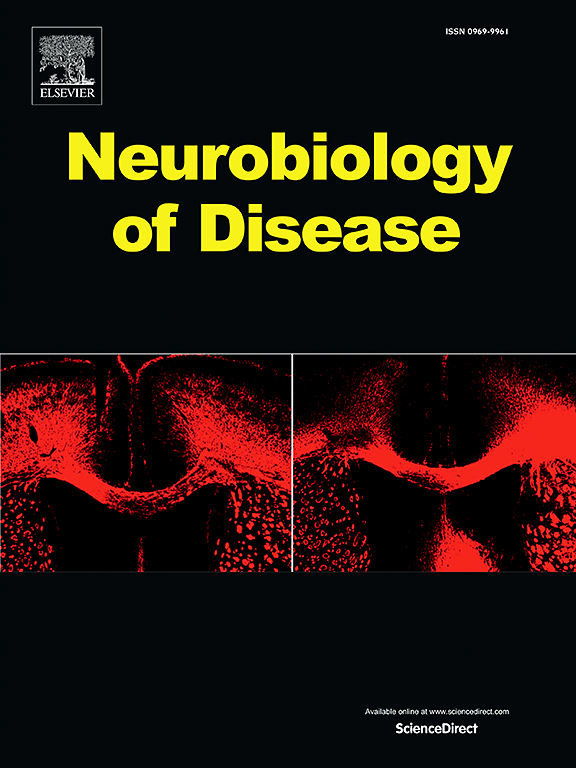Sigma-1R-Pom121轴在聚pr诱导的C9orf72 ALS中保持核转运和完整性
IF 5.6
2区 医学
Q1 NEUROSCIENCES
引用次数: 0
摘要
核细胞质运输中断有助于c9orf72相关肌萎缩性侧索硬化症(ALS)和额颞叶痴呆的发病机制。在由g4c2重复序列RNA翻译的二肽重复序列蛋白中,poly-PR毒性特别大,会损害核膜的完整性和运输。本研究发现,在NSC-34细胞和aav介导的poly-PR42小鼠模型中,poly-PR降低了核孔蛋白Pom121的表达,导致神经保护转录因子ATF3的细胞质错定位和核膜损伤。Pom121过表达恢复核ATF3定位,减轻多聚pr诱导的毒性。我们进一步发现Sigma-1受体(Sigma-1R)作为Pom121的稳定剂,在氧化应激下保持核完整性和ATF3功能。过表达Sigma-1R、Pom121或ATF3可挽救多pr诱导的细胞毒性。我们的研究结果确定了保护性Sigma-1R/Pom121/ATF3轴,并建议该途径作为c9orf72相关ALS的治疗靶点。本文章由计算机程序翻译,如有差异,请以英文原文为准。

Sigma-1R–Pom121 axis preserves nuclear transport and integrity in poly-PR-induced C9orf72 ALS
Nucleocytoplasmic transport disruption contributes to the pathogenesis of C9orf72-associated amyotrophic lateral sclerosis (ALS) and frontotemporal dementia. Among the dipeptide repeat proteins translated from G4C2-repeat RNA, poly-PR is particularly toxic, compromising nuclear envelope integrity and transport. Here, we revealed that poly-PR reduced expression of the nucleoporin Pom121 in NSC-34 cells and in an AAV-mediated poly-PR42 mouse model, resulting in cytoplasmic mislocalization of the neuroprotective transcription factor ATF3 and nuclear envelope damage. Pom121 overexpression restored nuclear ATF3 localization and alleviated poly-PR-induced toxicity. We further identified Sigma-1 receptor (Sigma-1R) as a stabilizer of Pom121 that preserved nuclear integrity and ATF3 function under oxidative stress. Overexpression of Sigma-1R, Pom121, or ATF3 rescued poly-PR-induced cytotoxicity. Our findings defined a protective Sigma-1R/Pom121/ATF3 axis and suggested this pathway as a therapeutic target in C9orf72-linked ALS.
求助全文
通过发布文献求助,成功后即可免费获取论文全文。
去求助
来源期刊

Neurobiology of Disease
医学-神经科学
CiteScore
11.20
自引率
3.30%
发文量
270
审稿时长
76 days
期刊介绍:
Neurobiology of Disease is a major international journal at the interface between basic and clinical neuroscience. The journal provides a forum for the publication of top quality research papers on: molecular and cellular definitions of disease mechanisms, the neural systems and underpinning behavioral disorders, the genetics of inherited neurological and psychiatric diseases, nervous system aging, and findings relevant to the development of new therapies.
 求助内容:
求助内容: 应助结果提醒方式:
应助结果提醒方式:


